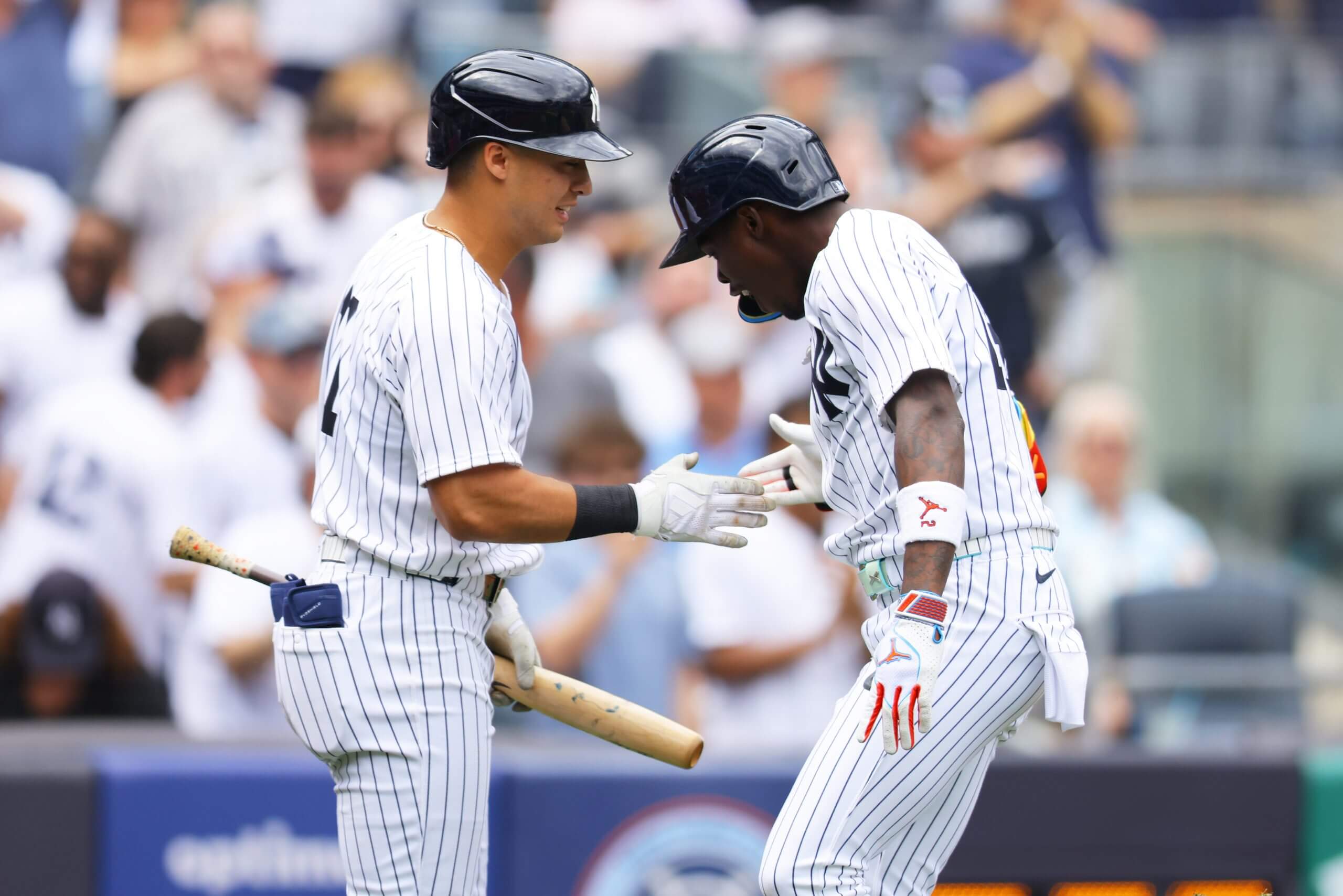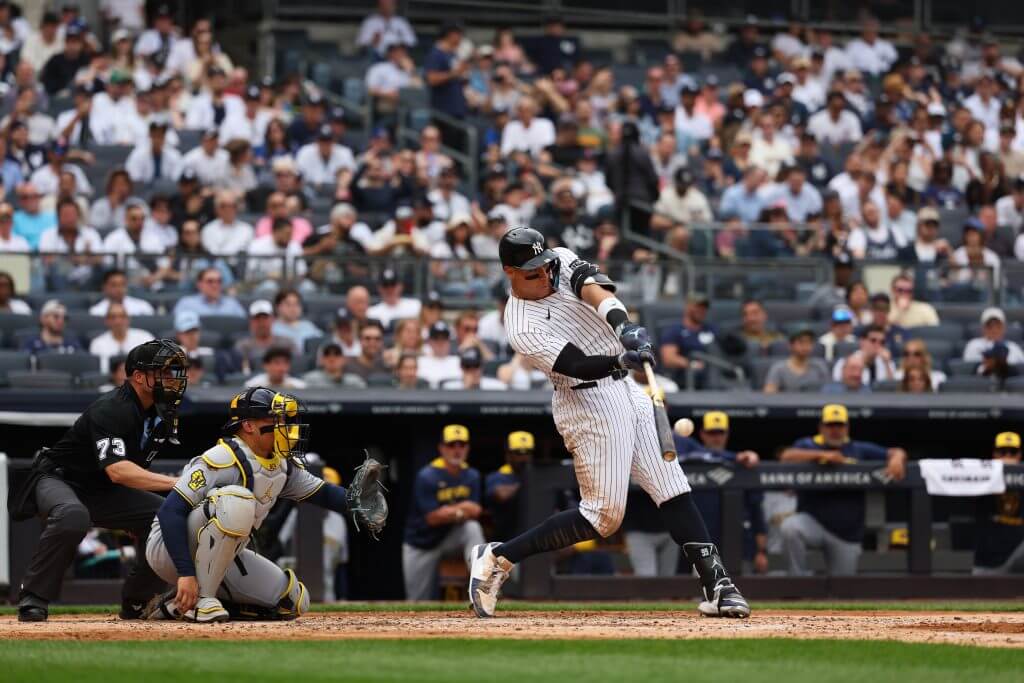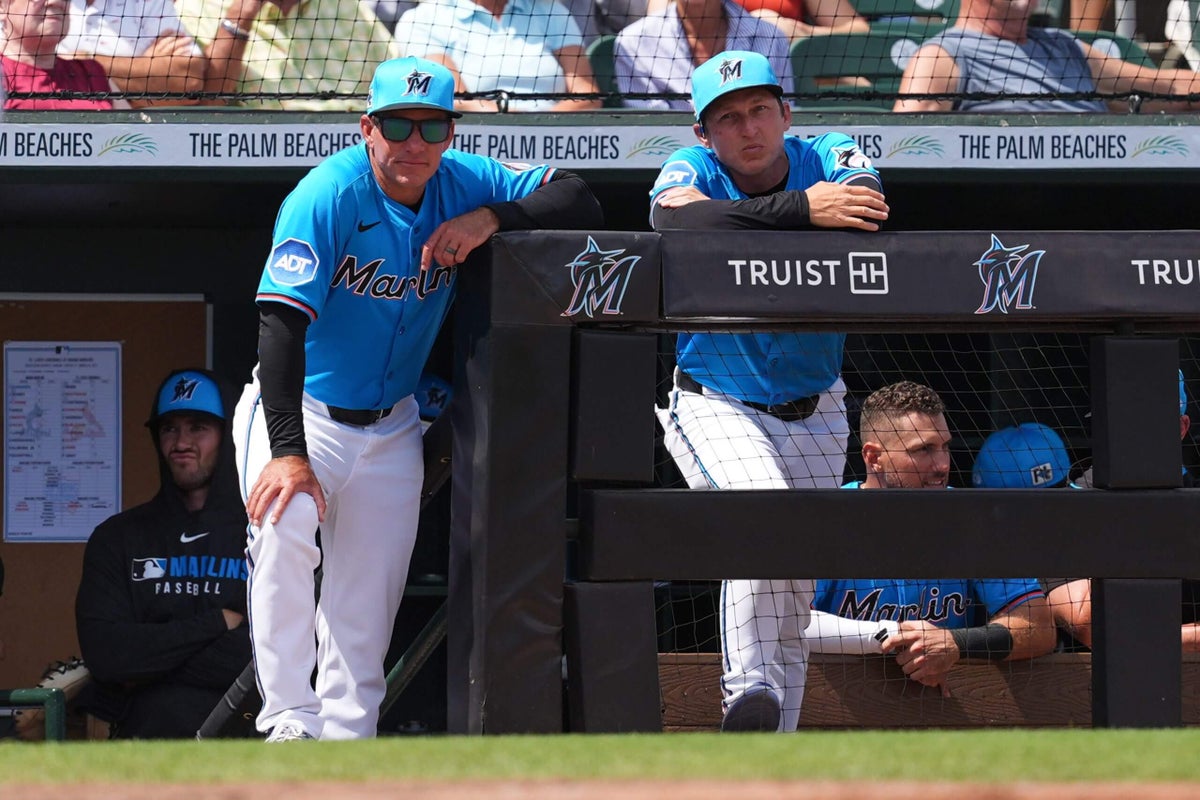Yankees’ Innovative Bats Make Headlines After Historic Game

NEW YORK — The New York Yankees made waves with their astonishing performance, smashing a franchise-record nine home runs in a thrilling 20-9 victory over the Milwaukee Brewers on Saturday. However, beyond the impressive numbers on the scoreboard, the focus shifted to the unique bats that some players were wielding during the game.
These specially designed bats are the culmination of two years of dedicated research and experimentation, spearheaded by Aaron Leanhardt, a former physicist from the Massachusetts Institute of Technology who has transitioned into coaching. The central question driving this innovation is simple yet profound:
“Where are you trying to hit the ball?” Leanhardt said in a phone interview on Sunday morning. “Where are you trying to make contact?”
At 48 years old, Leanhardt began his journey in the Yankees’ minor-league hitting department in 2022 and advanced to the major leagues last season as the team’s lead analyst. Players such as shortstop Anthony Volpe have been experimenting with these bats during games, and now, according to outfielder Cody Bellinger, as many as five Yankees are expected to use them early this season.
The uniquely shaped bats, resembling torpedoes, are custom-crafted to suit individual player preferences. They are engineered to ensure that the densest part of the bat aligns perfectly with the area where a particular hitter most frequently makes contact with the baseball. “It’s all about making the bat as heavy and as fat as possible in the area where you’re trying to do damage on the baseball,” Leanhardt explained, now serving as a field coordinator with the Miami Marlins.
A Major League Baseball spokesperson confirmed to The Athletic that these bats adhere to the league’s regulations. According to MLB Rule 3.02, a bat “shall be a smooth, round stick not more than 2.61 inches in diameter at the thickest part and not more than 42 inches in length. The bat shall be one piece of solid wood.” The rule also stipulates that “experimental” bats cannot be used until the manufacturer has received approval from Major League Baseball regarding their design and manufacturing methods.
When asked if he could be considered the inventor of this innovative technology, Leanhardt humbly attributed the achievement to collaboration, emphasizing the importance of input from coaches, players, MLB, and bat manufacturers. “Credit goes to those who take it,” he said. “But if people want to ascribe credit to different people, then I’ll take some cut of it.” A Yankees official acknowledged that Leanhardt deserves significant recognition for his contributions, while retired infielder Kevin Smith also credited him as the innovator behind the design.
Leanhardt’s path to baseball was anything but conventional. He holds a bachelor’s degree in electrical engineering from the University of Michigan and earned a Ph.D. in physics from MIT. From 2007 to 2014, he was a physics professor at the University of Michigan before venturing into coaching in the Atlantic League in 2017 and later at a Montana community college. By 2018, he joined the Yankees, and in 2024, the club designated him as its first “major league analyst,” responsible for blending quantitative insights with on-field performance and training.

Reflecting on his decision to leave academia for the competitive world of baseball, he remarked, “I think that’s one of the cool things about sports: it’s very competitive. Guys are willing to push the envelope. It’s just an opportunity to take my background to an area and find ways to innovate.”
Yankees manager Aaron Boone compared the use of these torpedo bats to a golfer undergoing a fitting for clubs. Leanhardt noted that through discussions with players, he identified two primary concerns: their desire to increase contact with pitches and to strike the ball more consistently with the bat’s “sweet spot,” which is the densest section of the bat. “They’re going to point to a location on the bat that is probably six or seven inches down from the tip of the bat,” he explained. “That’s where the sweet spot typically is. It’s just through those conversations where you think to yourself, why don’t we exchange how much wood we’re putting on the tip versus how much we’re putting in the sweet spot? That’s the original concept right there.”
Leanhardt expressed confidence in the benefits of redistributing the weight of the bat. “The bat speed should stay the same,” he noted. “Maybe the bat speed can even increase a little bit depending on how you want to redesign the bat. But ultimately, you’re getting a fatter barrel, a heavier barrel at the sweet spot. So in some sense, you can have your cake and eat it here too. You can get some gains without actually making sacrifices.”
While he refrained from discussing specific players’ experiences with the new bats, Yankees designated hitter Giancarlo Stanton previously mentioned that adjustments to his bat last season might have contributed to his current injury woes. Leanhardt, however, deferred questions about Stanton’s situation to the Yankees’ medical personnel, stating, “I’ll defer all those questions to the Yankees’ medical guys.”
Leanhardt acknowledged the lengthy timeline it took for such a groundbreaking bat design to emerge. “People back in the day swung very heavy bats made out of hickory, and then someone had this genius idea to swing something lighter, something like ash, and that was revolutionary back in the 1920s, ’30s, ’40s. Ultimately, it just takes people asking the right questions and being willing to be forward-thinking.”
He found joy in witnessing the excitement surrounding the new bats on social media after Saturday’s game. Although some players had started using them last season, “the entire industry kind of caught wind of it” and “it exploded in the offseason,” he said. “Which is why you see it in the hands of so many guys right now.”
The journey from design to production for these bats involved considerable coordination. Leanhardt humorously noted that he is likely familiar with officials at MLB who oversee bat regulation and “everyone who operates the lathe for every bat manufacturer in baseball.” He elaborated, “You really just are communicating with each company and trying to find the person who really knows the wood and knows how to turn the wood on a lathe. You just build a relationship with those guys and convince them that this is something that’s in their best interest to produce for their players. They want their players to be as successful as possible. Some guys buy in, and it gains traction,” he explained. “That’s really how it got built up.”
(Top photo of Aaron Leanhardt, right, with Marlins manager Clayton McCullough: Jasen Vinlove / Miami Marlins / Getty Images)

